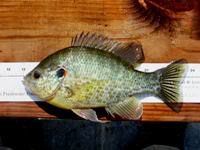|
Forums36
Topics40,961
Posts557,954
Members18,500
| |
Most Online3,612
Jan 10th, 2023
|
|
|
6 members (ewest, Drago, Shorthose, TSan06, phinfan, DrLuke),
1,446
guests, and
302
robots. |
|
Key:
Admin,
Global Mod,
Mod
|
|
|
|
Joined: Apr 2019
Posts: 200 Likes: 5
|
OP

Joined: Apr 2019
Posts: 200 Likes: 5 |
Local co-op offers "high-cacium" or "magnesium" options for Lime
What would be the correct choice to add to pond?
|
|
|
|
|
Joined: Mar 2005
Posts: 21,499 Likes: 266
Moderator Hall of Fame 2014  Lunker
|

Moderator Hall of Fame 2014  Lunker
Joined: Mar 2005
Posts: 21,499 Likes: 266 |
See this SRAC link -- https://srac.tamu.edu/fact-sheets/serve/112 Calcium and magnesium are essential in the biological processes of fish (bone and scale formation, blood clotting and other metabolic reactions). Fish can absorb calcium and magnesium directly from the water or from food. However, calcium is the most important environmental, divalent salt in fish culture water. The presence of free (ionic), calcium in culture water helps reduce the loss of other salts (e.g., sodium and potassium) from fish body fluids (i.e., blood). Sodium and potassium are the most important salts in fish blood and are critical for normal heart, nerve and muscle function. Research has shown that environ mental calcium is also required to re-absorb these lost salts. In low calcium water, fish can lose (leak) substantial quantities of sodium and potassium into the water. Body energy is used to re-absorb the lost salts. For some species (e.g., red drum and striped bass), relatively high concentrations of calcium hardness.
Last edited by ewest; 10/10/22 03:33 PM.
.gif) 
|
|
|
Moderated by Bill Cody, Bruce Condello, catmandoo, Chris Steelman, Dave Davidson1, esshup, ewest, FireIsHot, Omaha, Sunil, teehjaeh57 |
|